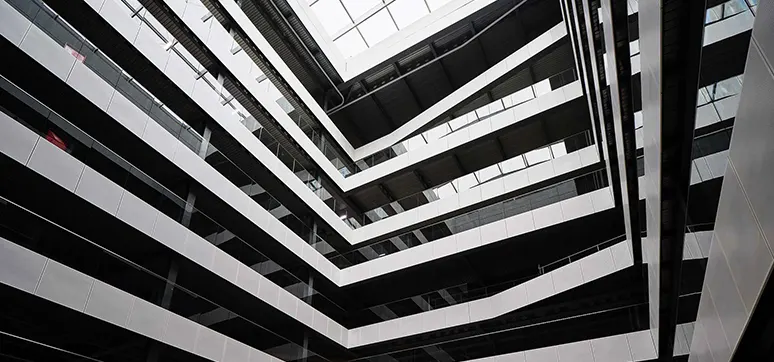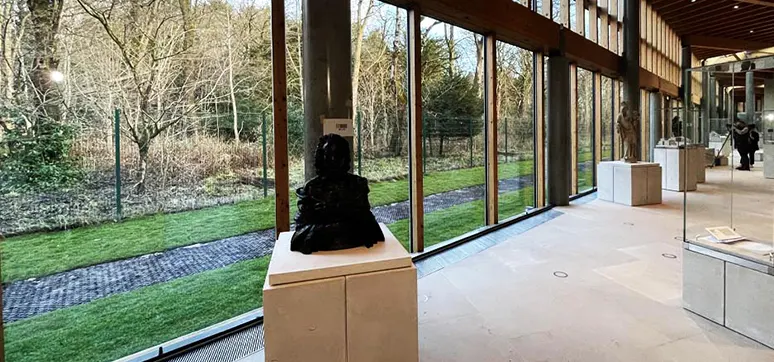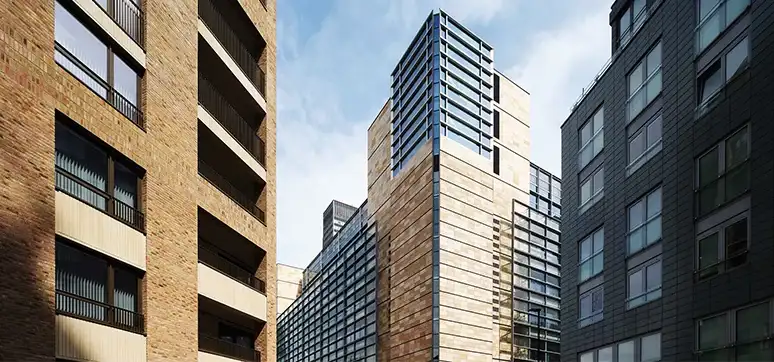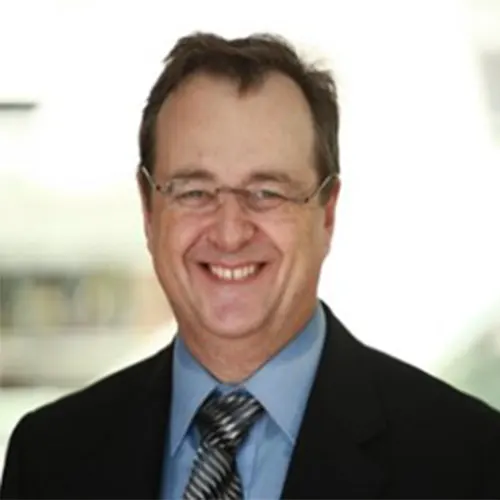Could you please tell our readers more about it and what are the projects they have done in the Middle East?
I have completed two recent presentations at the Zak World of Façade conferences in India. In May, I presented on Balancing Operational and Embodied Carbon. This aimed to introduce the audience to the approach being taken in the UK to look at both operational and embodied carbon associated with the façade design, how embodied carbon is defined and calculated and how it is changing the design process. Then in October, I presented How the Façade Industry Can Help Save the World at Zak World of Façades in Mumbai. This looked at the various ways that façade design can impact ecology, climate change, and society and what the façade industry would need to do to be able to step up to this challenge.
I have worked in the façade field since 1996 and in India since 2004 when I worked on Baet Monde and The Imperial in Mumbai – pioneers of high-rise living in Mumbai that has accelerated since then. I worked intensely in India while I was based in Singapore but reduced when I moved to the UK in 2014. However, since then I still managed to complete the Statue of Unity and then work on the proposed Navi Mumbai Airport.
Could you please tell us about your journey in the field? How did you think of becoming an architect? What do you enjoy most about your profession?
Inspired when Arup presented their work and values to the Civil Engineering graduates at the University of Southampton. I applied for a position as a Structural Engineer and was placed in their Building Engineering group. I was a fan of a British High Tech architect that was all the rage back then in the 1980s and so was delighted to find myself working on a Richard Rogers’ project on day one.
I stayed in Structural Engineering for 9 years and this took me from London to HK where I worked on some amazing big structures on my last project there I helped out our façade consultants to design an arched skylight and some tall bow trusses for the entrance lobby.
 Wanting a change of scene and a change of scale and to look for a more multi-disciplinary role I moved to Sydney to join the Arup Façade Engineering team there. It was all that I hoped for and I was inspired by all the new materials to work with and the new challenges of designing a complete element that was compact and had to play such an important role. Also, the creation, development, and verification of designs that would need to be efficient, economic, and practical and perform their job but also look wonderful was a great motivation. We were closely engaged in the fabrication and installation processes and best of all we got to test our designs and investigate things when they went wrong.
Wanting a change of scene and a change of scale and to look for a more multi-disciplinary role I moved to Sydney to join the Arup Façade Engineering team there. It was all that I hoped for and I was inspired by all the new materials to work with and the new challenges of designing a complete element that was compact and had to play such an important role. Also, the creation, development, and verification of designs that would need to be efficient, economic, and practical and perform their job but also look wonderful was a great motivation. We were closely engaged in the fabrication and installation processes and best of all we got to test our designs and investigate things when they went wrong.
I am indebted to the team I joined and especially the leaders who very smartly got me working on innovative and challenging structural engineering designs for half my time whilst also throwing me in at the deep end to run curtain wall projects going through the construction stage. I learned loads very quickly and continue to learn. There’s always something new in façades.
How do you go about choosing materials for façade and cladding?
Thankfully, these days’ façade consultants are engaged increasingly engaged in the design of the building at an earlier stage. Coming to a project where the geometry and appearance of the building envelope have been decided leads the façade consultant to act as a tailor, providing the building with a suit of façade systems, materials, and finishes from what the architect may have developed with the client the façade consultants have to squeeze out the performance needed to make the building work and meet all the requirements, whilst meeting the aesthetic with durable finishes.
The earlier engagement of façade consultants allows them to be part of the conversation about what the façade should be, what the building envelope needs to do, and how the façade and building form can be modified to make it easier to meet the sustainability objectives, codes and performance requirements as well as creating comfortable spaces that will improve productivity and delight for its occupants. Currently, material selection is being driven by more ecological concerns such as embodied carbon and circular economy principles. Systems need to be materially efficient and minimise wastage but some materials just have too big an ecological impact that leads to them being dropped or minimised in the façade.
What do you think is the role of a façade in the sustainability enhancement of a building?

The building skin has a huge impact on the sustainability and operational performance of the building as well as the ecological impacts of the material and system choices discussed above. Building Services solutions to drive the efficiencies of the building operation are increasingly well understood but the perimeter zone where the façade has to filter the external environment as part of an integrated approach to creating the best possible space in the building perimeter zone and for the whole building is an on-going challenge impacted by the site, function, and context of the building. All the decisions made about the façade design will greatly impact the durability of the façade and the energy used over the building’s life.
Please tell us about your favourite projects in which you were involved. Please share their façade & fenestration design details.
My favourite recent projects are mostly focused on the adaption and updating of existing buildings as these are interesting and highly challenging projects that illustrate how our industry must grasp and master to allow us to live within the one-planet boundaries. One Triton Square – this was a 5-storey office building completed in 1998 but has recently been extended upwards to 9 storeys. The redevelopment has saved 4,500 tonnes of CO2 compared to an equivalent new build. Given its age, the existing façade was assessed and it was decided to refurbish the existing curtain wall and re-erect it on the building. Improvements in insulation and new insulated glass units brought the curtain wall up to a high level of contemporary performance.
The Burrell Collection in Glasgow in a similar vein saved resources and carbon by reusing the existing mullions and glazing adapters, as well as recycling the original glass to form part of the insulated glass units. The building is a Grade A-listed museum set in parkland that was sensitively recast to improve the experience for visitors. A highly important public building that the Arup team put great effort into maintaining as much of the original building fabric as possible, whilst still improving the performance of the building to suit the custodianship of the collection.
Where is the architectural industry heading in the UK?
Increasingly drivers are towards a more evidenced based design informed by technical issues and the need to meet demanding regulations and local requirements. In the City of London, before a building can be redeveloped, the planners often want it demonstrated that the existing building cannot be retained whole or in part – with the aim of saving carbon. The result is that increasingly the form of the building is the product of the resolution of the competing demands informed by the wider consultant team. Architects, therefore, play the role of a conductor of many disciplines rather than driving a specific vision for the building or site. Driven by the need to satisfy multiple statutory, planning, and client criteria and requirements focus is paid to building up narratives to justify and verify the proposed final design of the building.

What are the cladding trends in the UK building industry?
Driven by concerns over achieving an acceptable level of whole-life carbon for projects and increasingly onerous regulations for energy consumption many schemes in the UK’s colder climate look for cladding materials that sit in front of thick layers of (non-combustible) insulation but do that have a high embodied carbon content. Material option studies will consider offsets from either recycled content used in the production of the materials or at the end of life, or the use of power from non-fossil sources, but it is essential to consider and compare complete solutions (say storey height modules) of the façade to take into account the influence of subframes and inner layers on both the performance and embodied carbon.
Natural stone and some ceramics and brick have become more popular but others might argue that easier-to-recycle aluminium and other metals are good options. Precast concrete has also seen a resurgence because of its lower carbon per cubic meter and the elimination of aluminium sub-frames but the impacts of increased thickness, weight, and therefore increased strength of the supporting frame also need to be considered in the assessments.
The other trend impacting façade design is towards large volumetric, modular construction to reduce reliance on-site-based staff. The cladding on these systems is either installed on the modules in the factory or they are delivered with only inner layers requiring the connections between modules and outer skins to be completed in situ. Careful planning and design of these approaches are essential to forming effective and (fire) safe building envelopes. The danger, to be addressed by careful design, is that the module construction process may dominate and compromise appearance and performance.
The final trend is the increased need to manage information and data through construction. The recent Building Safety Act is changing the regulatory framework for building construction in the UK and this implements the Golden Thread approach advocated in the Hackett Report. As a result records of all components that contribute to the fire safety of the building will need to be meticulously maintained and provided to the authorities and building owners and operators at completion. In a similar vein increasing information will need to be captured on the sourcing of materials and components of the “Carbon Thread” to demonstrate that embodied carbon targets have been achieved.
One piece of advice you would like to give to aspiring architects and façade consultants?
The façade industry is fascinating and can be the basis of a very stimulating and creative career. The key to success is to maintain interest and enthusiasm throughout your career and continue learning and developing skills. Seek out education and courses and aim to achieve professional qualifications, although challenging I believe these will become increasingly important for façade professionals to show their levels of knowledge and experience.














